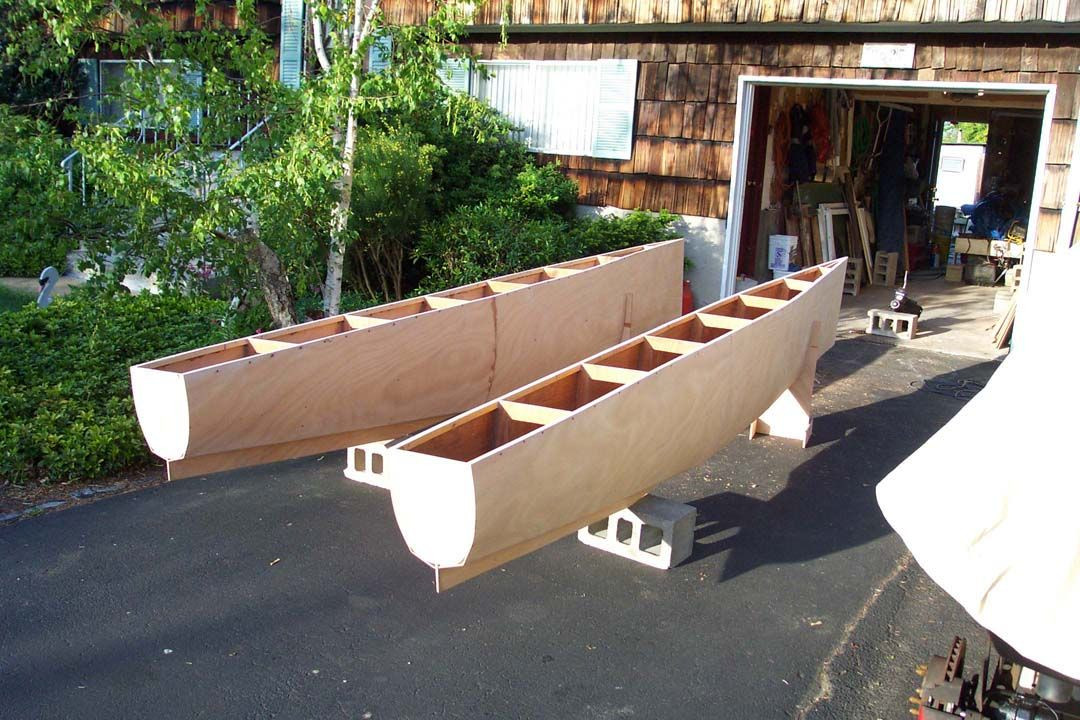
Powerboat Plans for Functional, All-Purpose Small Watercraft
For those seeking a versatile and reliable vessel for a range of aquatic activities, powerboat plans offer a blueprint for crafting a small watercraft that meets specific needs. From fishing excursions and leisurely cruises to water sports and exploring hidden waterways, a well-designed powerboat can enhance the enjoyment of time spent on the water. This article will delve into the key considerations for selecting and implementing powerboat plans, highlighting the factors that contribute to a functional and all-purpose small watercraft.
Choosing the Right Powerboat Plans
The journey to building a custom powerboat begins with selecting the right plans. The options are vast, ranging from simple and straightforward designs to intricate and highly specialized blueprints. Factors to consider when making this crucial decision include:
Intended Use
The primary purpose of the powerboat will dictate the essential design elements.
- For fishing, a stable platform with ample storage for gear and a comfortable seating arrangement is paramount.
- Water sports enthusiasts may prioritize speed and maneuverability, opting for designs with a low draft and a powerful engine.
- Cruising and exploring calmer waters might call for a spacious cabin with comfortable seating and a leisurely cruising speed.
Size and Capacity
The intended size and capacity of the powerboat are critical factors. Consider:
- The number of passengers and their weight.
- The amount of cargo or equipment that needs to be accommodated.
- The size of the water body where the boat will be used.
Materials and Construction
Powerboat plans may specify different materials and construction techniques.
- Fiberglass is a popular choice for its durability, water resistance, and ease of repair.
- Aluminum is lightweight and corrosion-resistant, but may be less robust than fiberglass.
- Wood, while requiring more maintenance, offers a classic aesthetic and can be crafted to exacting standards.
Skill Level and Experience
Powerboat plans come with varying levels of complexity. It is essential to choose plans that align with the builder's skill level and experience.
- Beginners may opt for simpler designs with detailed instructions and clear diagrams.
- Experienced boat builders can tackle more intricate designs, potentially incorporating custom features and modifications.
Essential Design Elements for Functionality
A functional powerboat requires careful consideration of essential design elements that contribute to its performance, safety, and overall usability.
Hull Design
The hull is the foundation of the powerboat, determining its stability, speed, and handling.
- A deep-vee hull provides stability in choppy waters and a smooth ride at higher speeds.
- A flat bottom hull offers shallow draft for navigating rivers and inlets, but may be less stable in rough seas.
- A catamaran hull provides increased stability and a spacious deck, but may require more power to reach high speeds.
Engine and Propulsion
The choice of engine and propulsion system greatly influences the powerboat's performance and fuel efficiency.
- Outboard motors offer versatility, allowing for easy maintenance and removal for transport.
- Inboard engines are typically more powerful and offer smoother operation, but require more space and are less easily serviced.
- Jet drives offer exceptional maneuverability in shallow waters but may be less efficient than traditional propellers.
Steering and Controls
Reliable steering and controls are essential for safe and efficient operation.
- Choose high-quality steering components and control systems that are responsive and easy to use.
- Consider features like hydraulic steering for smoother operation and reduced effort.
- Ensure the control panel is ergonomically designed for comfortable and safe operation.
Deck Layout and Features
The deck layout and features should cater to the intended use of the powerboat.
- Fishing boats may have dedicated rod holders, livewells, and ample storage for tackle.
- Water sports boats might feature a swim platform, tow points, and a spacious deck for passengers.
- Cruising boats may prioritize comfortable seating, a spacious cabin, and amenities like a galley or head.
Implementation and Construction
Once powerboat plans are selected, the construction process requires meticulous attention to detail and a commitment to quality.
Materials and Tools
The specific materials and tools required will vary depending on the chosen plans.
- Fiberglass construction typically requires resin, fiberglass cloth, gelcoat, and specialized tools for cutting, sanding, and finishing.
- Aluminum construction utilizes sheets and profiles, along with welding equipment and appropriate safety gear.
- Wooden construction involves lumber, plywood, fasteners, and specialized tools for woodworking.
Building Process
The building process typically follows a systematic approach, starting with the hull construction.
- The hull is carefully shaped and molded, ensuring proper alignment and structural integrity.
- The deck, cockpit, and cabin are then constructed and integrated with the hull.
- The engine, steering, and control systems are installed, followed by finishing touches like paint, upholstery, and accessories.
Safety and Regulations
Safety is paramount when building and operating a powerboat.
- Adhere to all relevant safety regulations, including those related to boat construction, engine installation, and operation.
- Ensure proper ventilation and fire suppression systems are installed.
- Equip the boat with safety gear, including life jackets, flares, and a first-aid kit.
Conclusion
Powerboat plans provide a blueprint for crafting a functional, all-purpose small watercraft that can enhance the enjoyment of various aquatic activities. By carefully considering intended use, size, materials, design elements, and construction techniques, boat builders can create a vessel that meets their specific needs and requirements. The journey from plan to finished boat is a rewarding one, offering the satisfaction of building a custom craft for years of enjoyment on the water.

0 comments:
Post a Comment
Note: Only a member of this blog may post a comment.